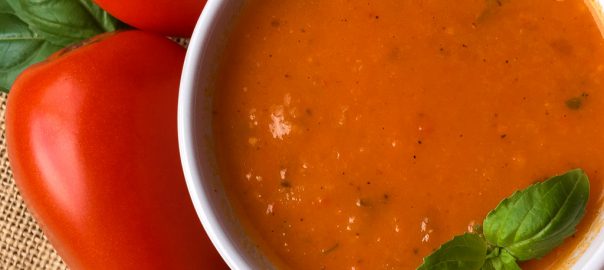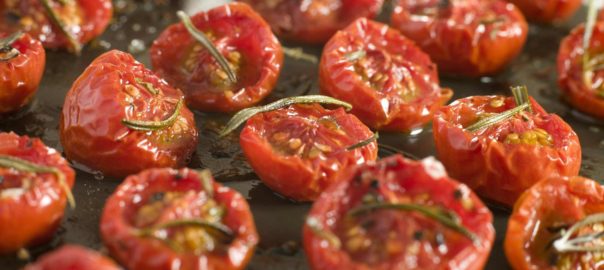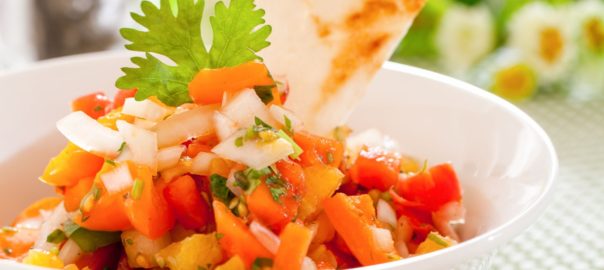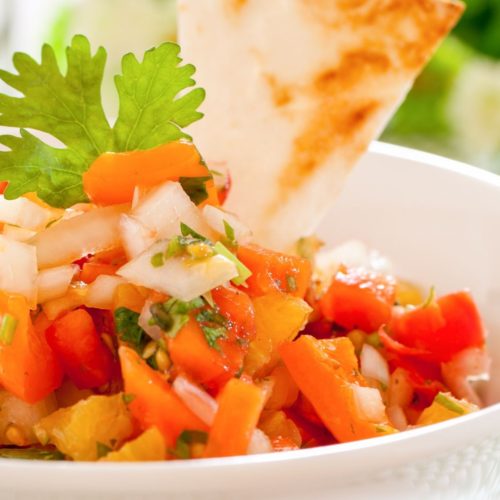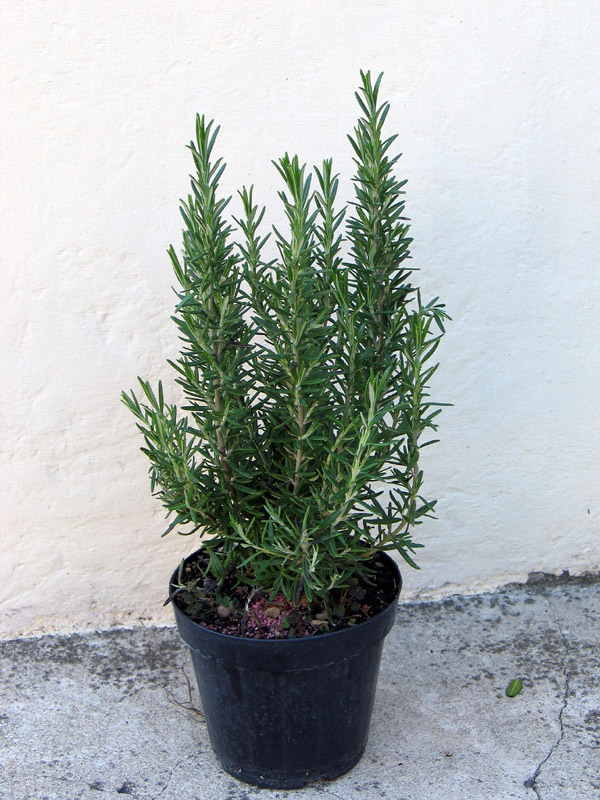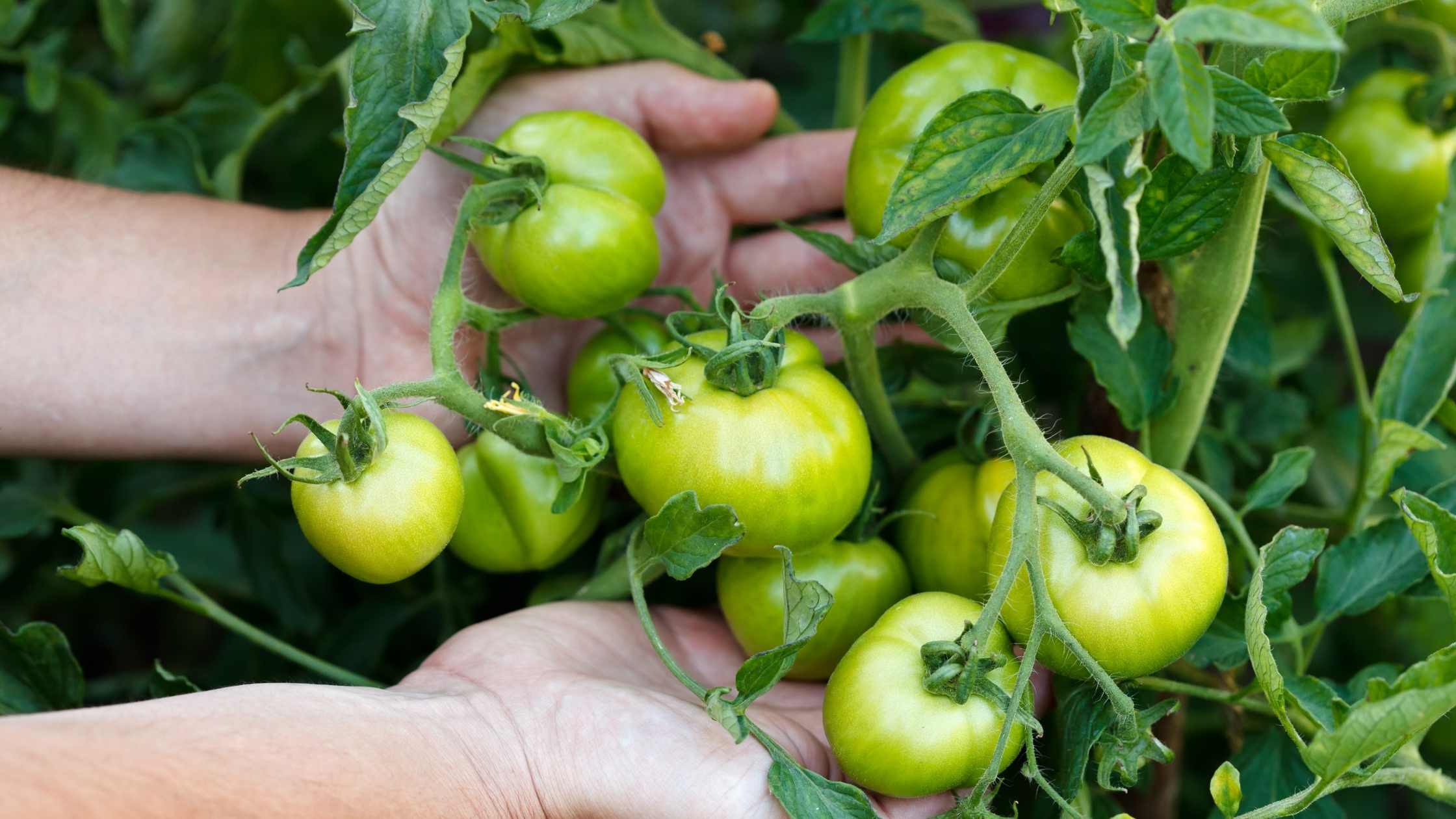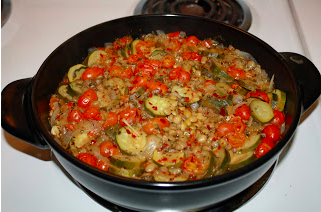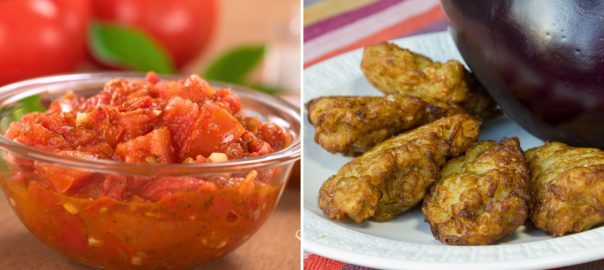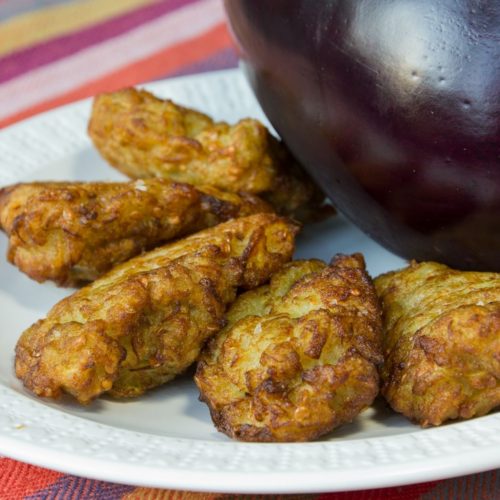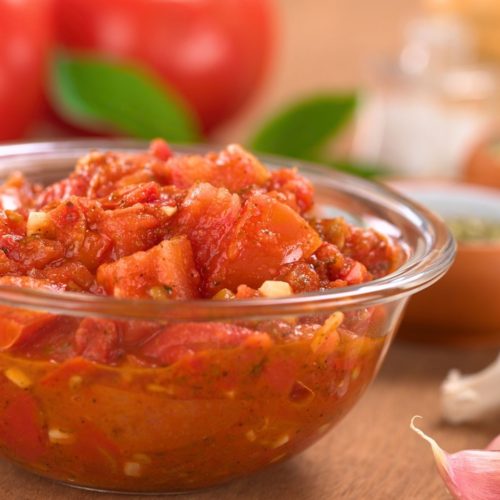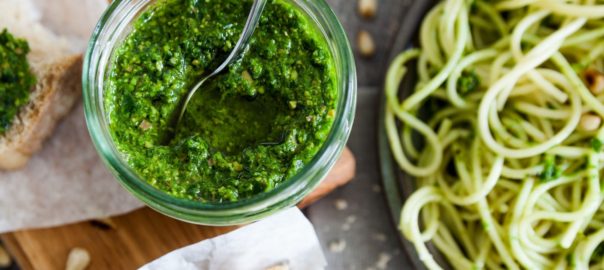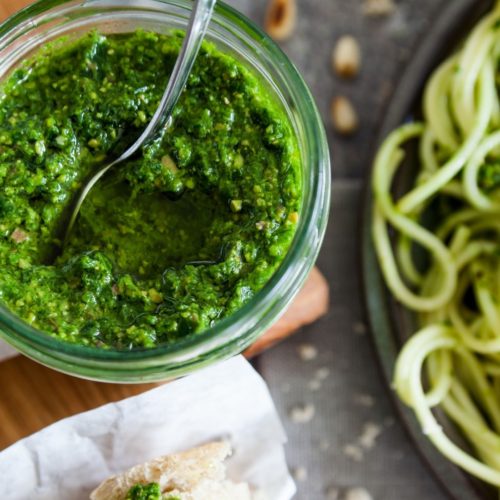As the weather gets chilly and the days get shorter I find an increased desire for soup. Nourishing and warming, soup seems to really hit the spot. Plus it’s so versatile. Soup is great as a snack, as a meal starter, or in some cases as the meal all by itself.
This particular roasted vegetable soup is a favorite. After all, who doesn't love tomato soup? But part of what makes this so wonderful is the fennel which gives it a delicious flavor boost. This soup tastes even better the second day, so be sure to make a lot (this recipe doubles or even triples with ease) to ensure you have leftovers.
- 1½ lbs. Roma tomatoes, halved
- 2 medium red bell peppers, deseeded and quartered
- 1 large fennel bulb, thinly sliced
- 2 large carrots, cut in half lengthwise
- 2 medium shallots, outer skin removed and halved
- 4 cloves garlic, smashed and peeled
- 2 T. extra virgin olive oil
- Sea salt and black pepper, to taste
- 2 T. fresh thyme leaves
- 4 c. organic chicken bone broth
- ½ c. full-fat coconut milk
- ½ c. fresh basil leaves, thinly sliced
- Preheat oven to 400°F
- Line a large, rimmed baking sheet with parchment paper or a baking mat and set aside
- Arrange the tomatoes, red peppers, fennel, carrots, shallots, and garlic in a single layer on the prepared baking sheet
- Drizzle with olive oil and season with salt and black pepper, to taste
- Toss to combine and sprinkle veggies with fresh thyme leaves
- Place baking sheet in preheated oven and roast until vegetables are tender and lightly charred, approximately 20-25 minutes
- Transfer the roasted veggies and any juices from the baking sheet to a large soup pot and add the bone broth
- Cook over medium heat, stirring occasionally, until hot and and bubbly
- Remove from heat
- Using an immersion blender, blend contents of the soup pot until completely smooth
- Stir in the coconut milk and fresh basil, and serve
- Enjoy!
- Safety Tip: If you don’t have a stick or immersion blender, it is possible to use a blenders to process the cooked veggies and liquid. However it is important to be sure your blender lid is vented properly to prevent the hot liquid from exploding when you turn on the blender.
Store in the refrigerator for several days. It can also be stored in single-serving containers in the freezer for a quick meal or snack later.

